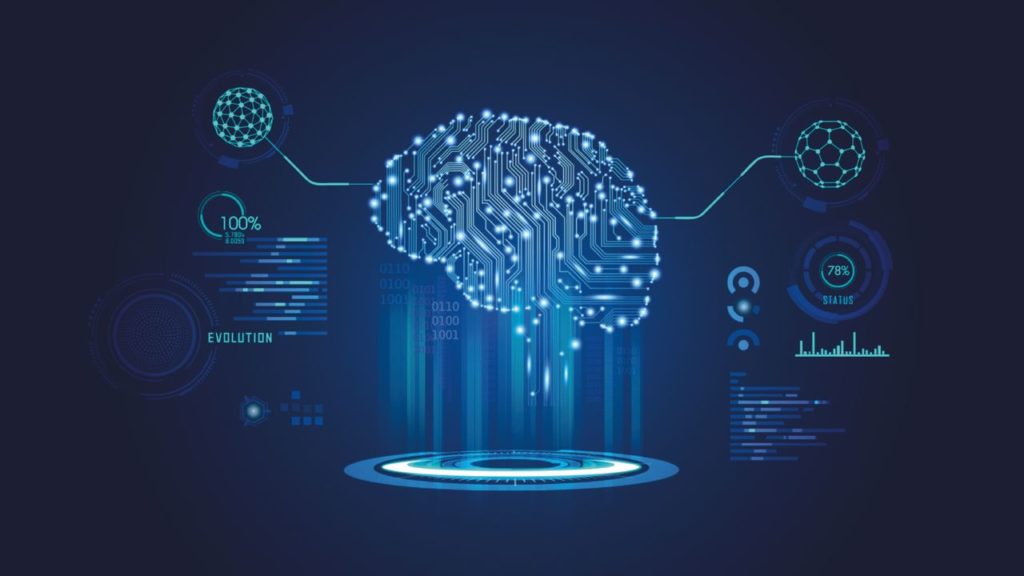The Future Is Now: A Look At Emerging Products Shaping Our World
The Future is Now: A Look at Emerging Products Shaping Our World
Related Articles: The Future is Now: A Look at Emerging Products Shaping Our World
Introduction
With enthusiasm, let’s navigate through the intriguing topic related to The Future is Now: A Look at Emerging Products Shaping Our World. Let’s weave interesting information and offer fresh perspectives to the readers.
Table of Content
The Future is Now: A Look at Emerging Products Shaping Our World

The world of technology is a constantly evolving landscape, with new products emerging at a breakneck pace. These innovations are not mere gadgets; they are tools that reshape how we live, work, and interact with the world around us. This article delves into the most anticipated new products across various sectors, exploring their potential impact and benefits.
1. Artificial Intelligence (AI) and Machine Learning (ML) Advancements:
AI and ML are no longer just buzzwords; they are transforming industries across the board. The development of sophisticated algorithms and advanced processing power is enabling the creation of products that can learn, adapt, and solve complex problems with human-like efficiency.
a) AI-Powered Personal Assistants:
Voice assistants like Siri, Alexa, and Google Assistant are becoming increasingly sophisticated, capable of handling a wider range of tasks. New products are emerging with enhanced natural language processing, enabling more nuanced conversations and personalized experiences. This evolution is leading to a future where AI assistants can manage our schedules, provide tailored recommendations, and even control our smart homes.
b) AI-Driven Healthcare Solutions:
The healthcare sector is witnessing a revolution fueled by AI. New products are being developed to diagnose diseases earlier, personalize treatment plans, and even predict potential health risks. AI-powered imaging analysis can detect anomalies in medical scans, while machine learning algorithms can analyze patient data to identify patterns and improve treatment outcomes.
c) AI in Manufacturing and Automation:
AI is transforming manufacturing processes, leading to increased efficiency and reduced costs. Robots equipped with AI can perform complex tasks with greater precision and speed, while machine learning algorithms can optimize production lines and predict equipment failures. These advancements are paving the way for a future of highly automated and intelligent factories.
2. Sustainable Technology and Green Innovations:
As environmental concerns escalate, new products are emerging that prioritize sustainability and eco-friendliness. These innovations are tackling issues like energy consumption, waste reduction, and resource scarcity.
a) Renewable Energy Solutions:
Solar panels, wind turbines, and other renewable energy technologies are becoming increasingly efficient and affordable. New products are being developed to optimize energy storage, improve grid integration, and make clean energy more accessible to a wider audience.
b) Sustainable Materials and Manufacturing:
The focus on sustainability is extending to the materials used in product manufacturing. Biodegradable plastics, recycled materials, and innovative manufacturing processes are reducing the environmental footprint of everyday products.
c) Smart Homes and Cities:
Smart home technologies are playing a crucial role in reducing energy consumption and promoting resource efficiency. Smart thermostats, lighting systems, and appliances can optimize energy usage, while smart city initiatives are using sensors and data analytics to manage traffic flow, optimize waste collection, and improve overall sustainability.
3. The Rise of the Metaverse:
The metaverse, a virtual world where people can interact and experience digital content, is rapidly gaining traction. This new frontier is opening up exciting possibilities for entertainment, education, and even commerce.
a) Virtual and Augmented Reality (VR/AR) Devices:
VR and AR headsets are becoming more affordable and accessible, offering immersive experiences that blur the lines between the physical and digital worlds. New products are emerging with higher resolutions, improved tracking capabilities, and more realistic graphics, creating more engaging and interactive virtual environments.
b) Metaverse Platforms and Applications:
Companies are developing platforms and applications specifically designed for the metaverse, allowing users to create avatars, interact with others, attend virtual events, and even purchase digital assets. These platforms are paving the way for a future where our digital lives become increasingly intertwined with our physical realities.
4. Advances in Biotechnology and Genetic Engineering:
Biotechnology and genetic engineering are revolutionizing the fields of medicine, agriculture, and environmental science. New products are being developed to diagnose and treat diseases more effectively, improve crop yields, and even combat climate change.
a) Gene Editing Technologies:
CRISPR-Cas9 and other gene editing technologies are allowing scientists to modify DNA with unprecedented precision. This has implications for treating genetic diseases, developing new therapies, and even enhancing crop resistance to pests and diseases.
b) Personalized Medicine and Genomics:
Advances in genomics are enabling personalized medicine, where treatments are tailored to an individual’s unique genetic makeup. New products are being developed to analyze DNA and identify genetic predispositions to certain diseases, allowing for early intervention and more effective treatment.
c) Bio-based Materials and Products:
Biotechnology is also driving the development of bio-based materials, derived from renewable sources like plants and bacteria. These materials offer sustainable alternatives to traditional plastics and other synthetic materials, reducing our reliance on fossil fuels.
5. Emerging Technologies in Transportation:
The transportation sector is undergoing a significant transformation, driven by new technologies that are making travel safer, more efficient, and more environmentally friendly.
a) Electric Vehicles (EVs):
EVs are becoming increasingly popular as battery technology improves and charging infrastructure expands. New products are emerging with longer ranges, faster charging times, and more affordable prices, making EVs a viable alternative to gasoline-powered vehicles.
b) Autonomous Vehicles (AVs):
The development of autonomous vehicles is progressing rapidly, with companies like Tesla, Waymo, and Cruise leading the way. AVs have the potential to revolutionize transportation, reducing accidents, improving traffic flow, and increasing accessibility for people with disabilities.
c) Advanced Air Mobility:
The rise of air taxis and other advanced air mobility solutions is opening up new possibilities for urban transportation. These vehicles can fly over traffic congestion, offering a faster and more efficient way to travel within cities.
FAQs about New Products:
Q: What are the potential risks associated with new products?
A: While new products offer exciting possibilities, they also carry inherent risks. These risks can range from technical malfunctions to ethical concerns. It is crucial for developers and consumers to be aware of these risks and to take appropriate precautions.
Q: How can I stay informed about new products?
A: Staying informed about emerging technologies is essential for understanding the world around us. Regularly reading industry publications, attending tech conferences, and following thought leaders on social media can provide valuable insights.
Q: What are the ethical considerations surrounding new products?
A: As technology advances, it is essential to consider the ethical implications of new products. Issues like data privacy, algorithmic bias, and the potential for job displacement need to be addressed thoughtfully.
Tips for Evaluating New Products:
1. Consider the Product’s Purpose: What problem does the product solve? Is it truly innovative, or is it simply a repackaged version of existing technology?
2. Assess the Product’s Features and Benefits: What are the key features and benefits of the product? How does it compare to existing products in the market?
3. Evaluate the Product’s Reliability and Durability: Is the product built to last? What is the manufacturer’s warranty policy?
4. Consider the Product’s Environmental Impact: What are the environmental implications of manufacturing, using, and disposing of the product?
5. Research the Company’s Reputation: What is the company’s track record in terms of product quality, customer service, and ethical practices?
Conclusion:
The emergence of new products is a testament to human ingenuity and our relentless pursuit of progress. These innovations are shaping our world in profound ways, offering solutions to pressing challenges and opening up new opportunities. As we navigate this rapidly evolving landscape, it is crucial to embrace these advancements with a critical and informed perspective, ensuring that they are developed and deployed ethically and responsibly. By understanding the potential benefits and risks of new products, we can harness their power to create a better future for all.








Closure
Thus, we hope this article has provided valuable insights into The Future is Now: A Look at Emerging Products Shaping Our World. We thank you for taking the time to read this article. See you in our next article!
You may also like
Recent Posts
- The Art Of Persuasion: A Comprehensive Guide To Makeup Product Label Design
- A Comprehensive Look At Mary Kay Cosmetics: Reviews, Insights, And Considerations
- Affordable Skin Care: A Guide To Effective Products Under INR 100
- Navigating The World Of Mary Kay Discounted Products: A Comprehensive Guide
- The Power Of High-Resolution Images: A Guide To Acquiring The Best Visuals For Your Projects
- The Power Of Reviews: Navigating The World Of Makeup Products
- Swiss Beauty Makeup: A Comprehensive Guide To Quality And Affordability
- Embracing Natural Beauty: Makeup Tips And Techniques For Women Over 50
Leave a Reply